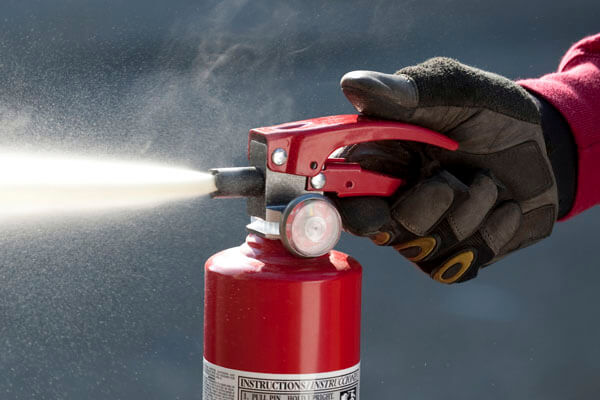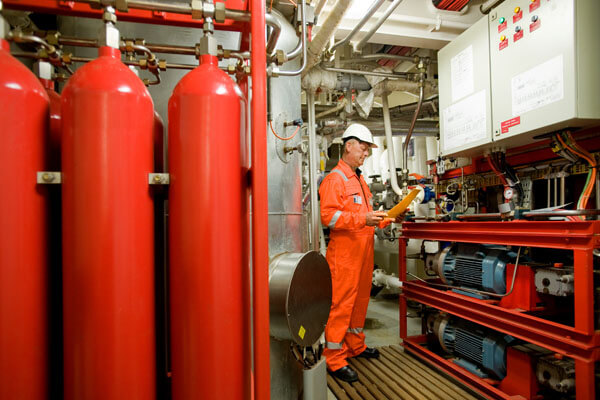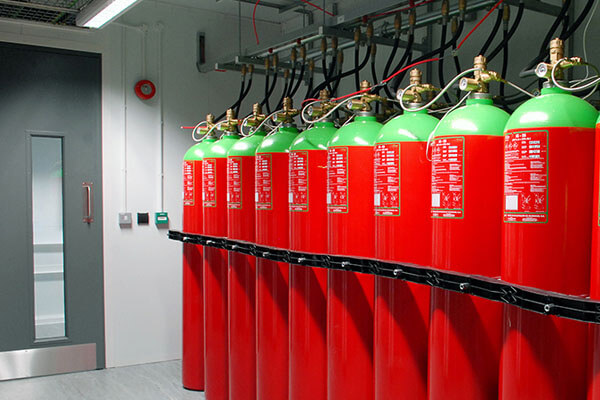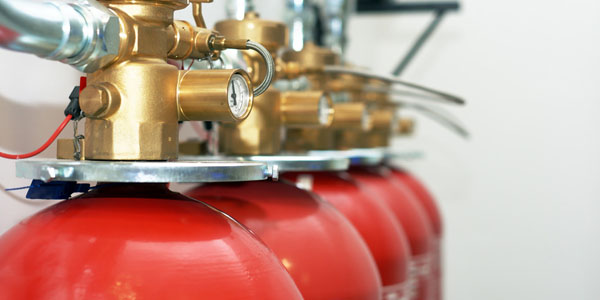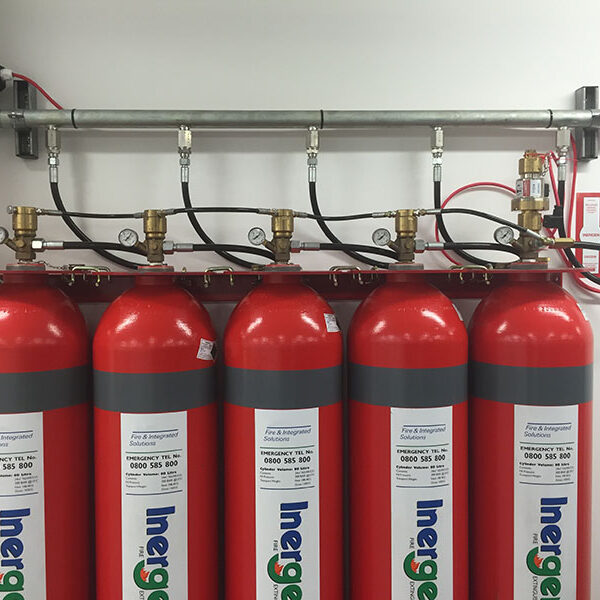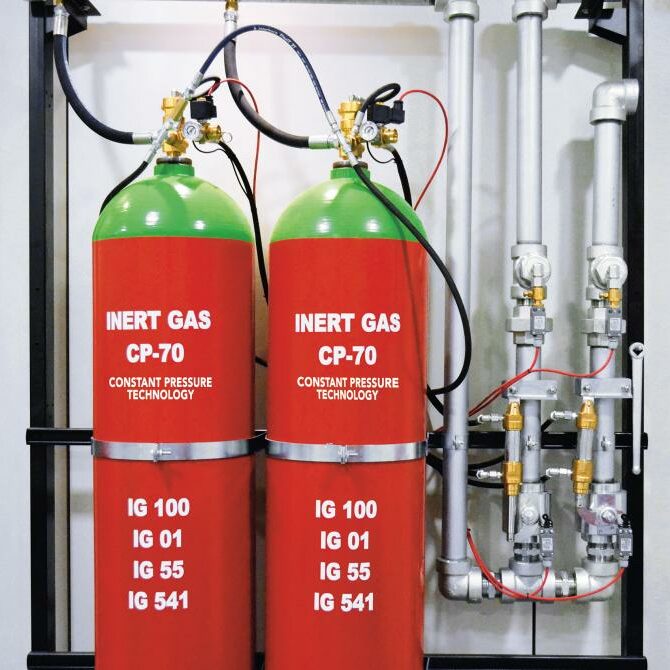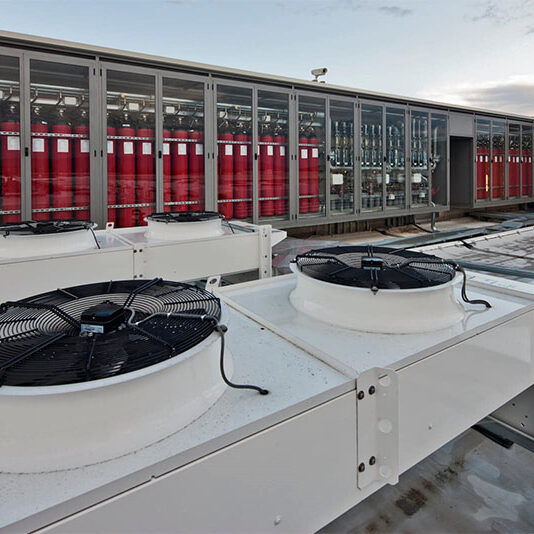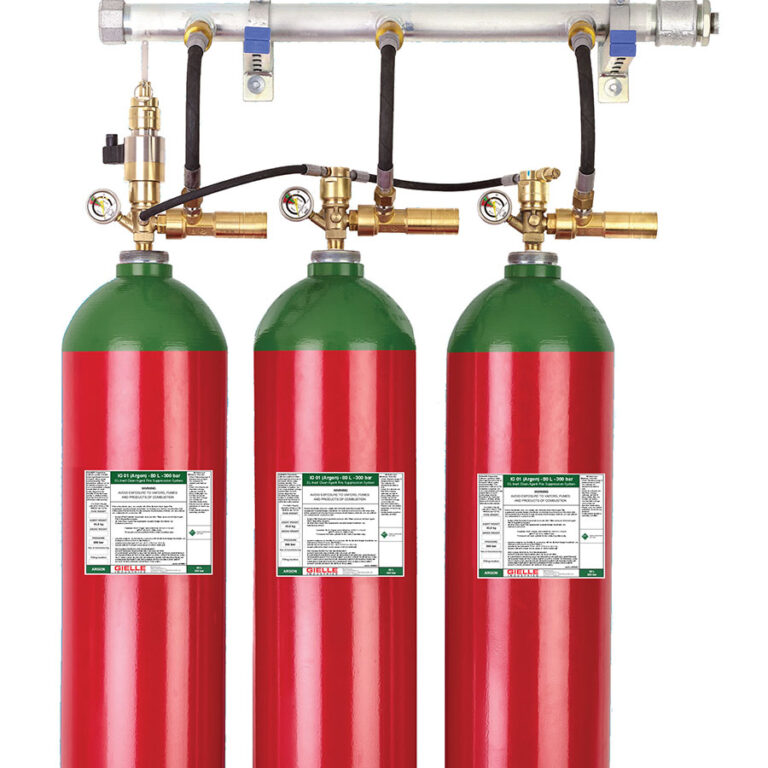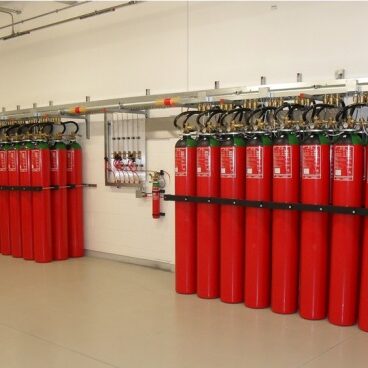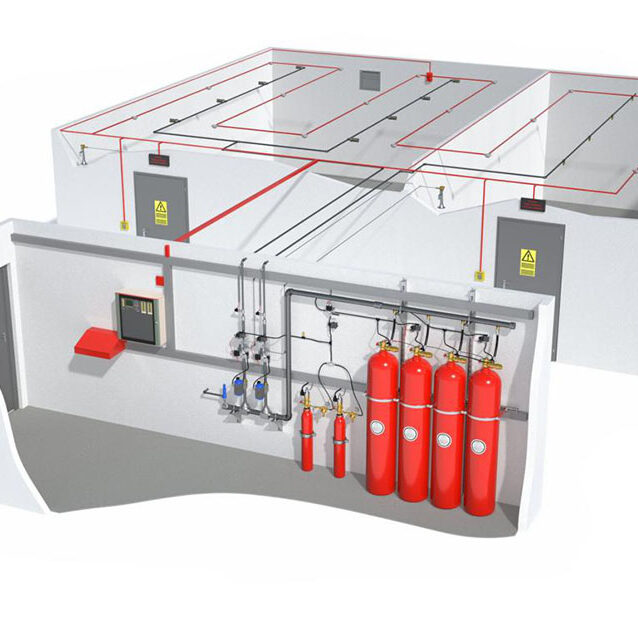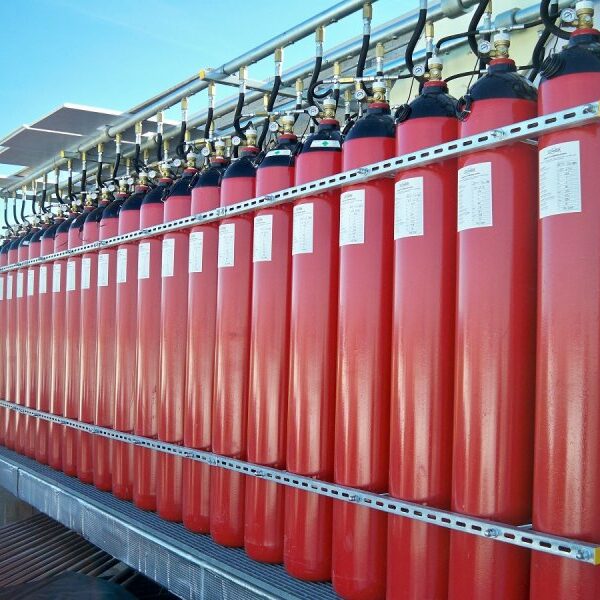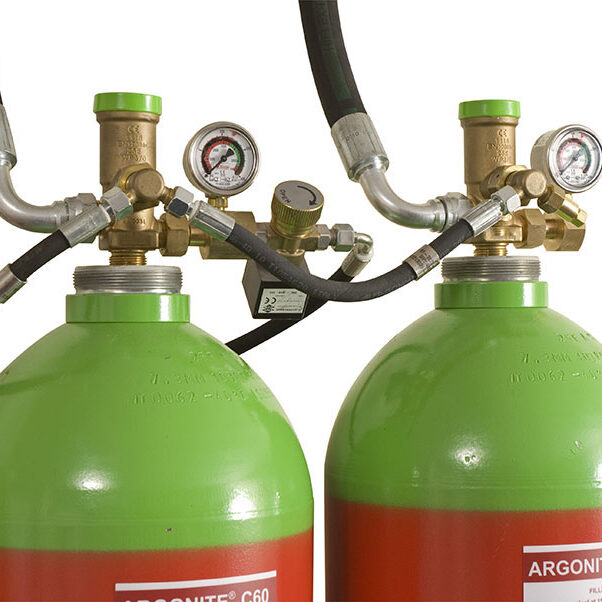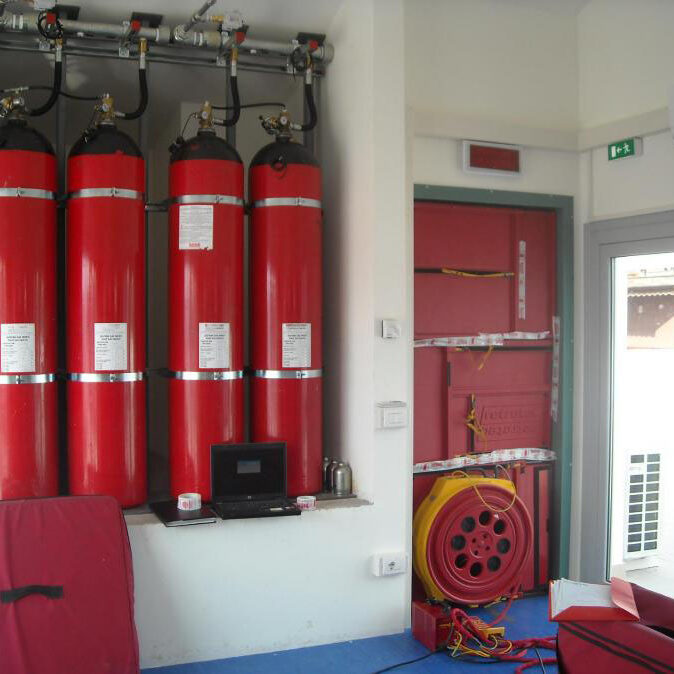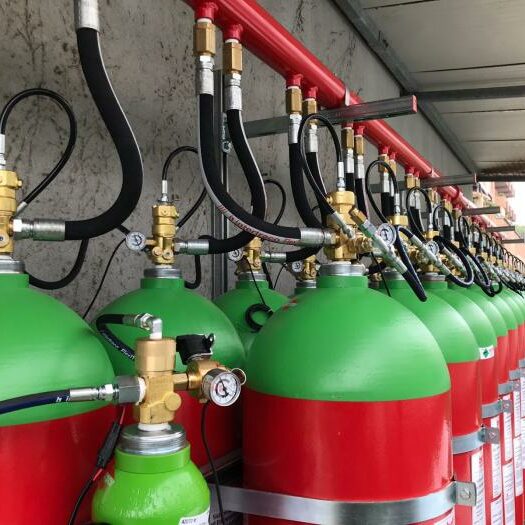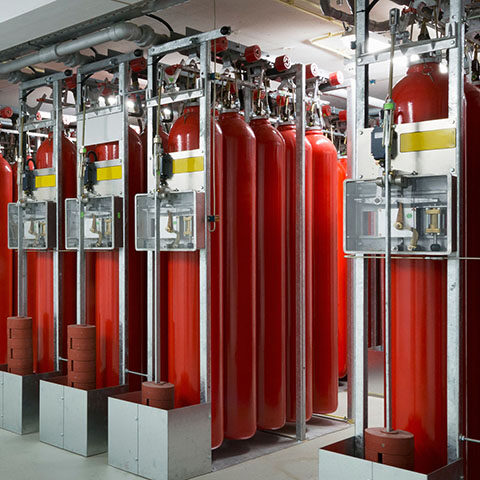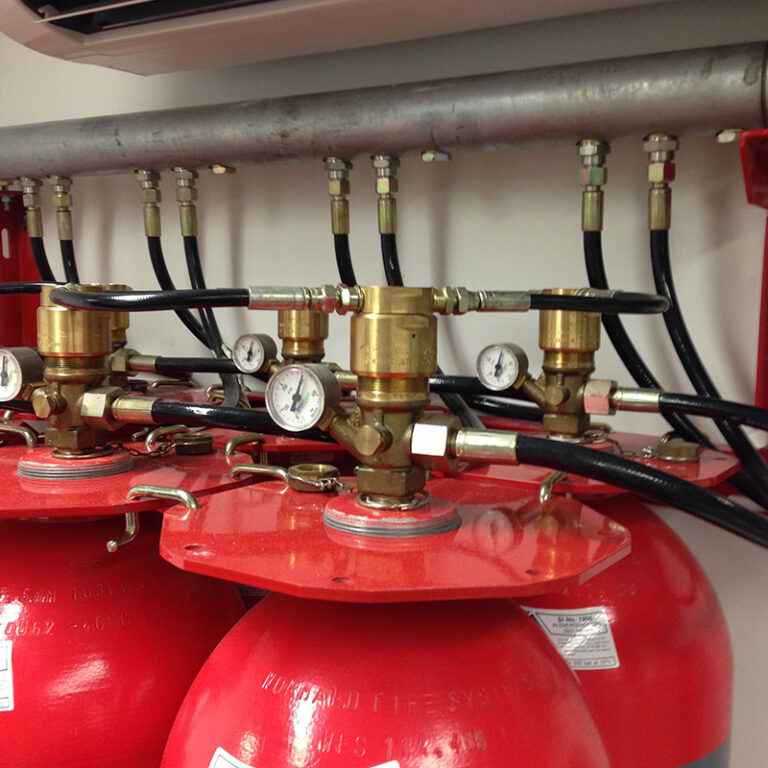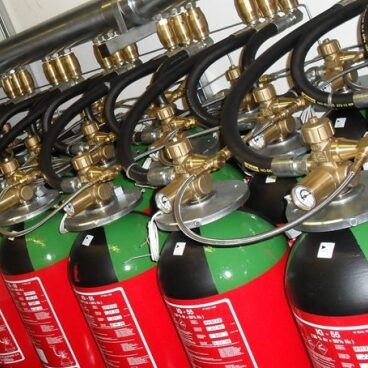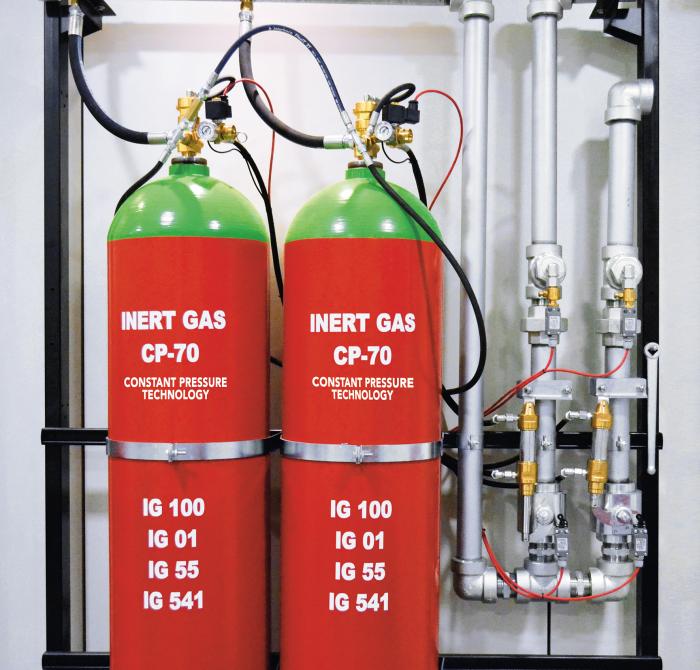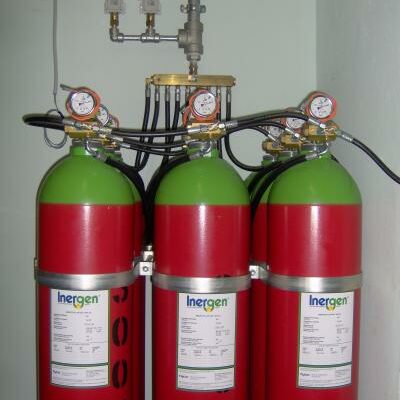
Inert gas fire-fighting systems use argon and nitrogen gases and related mixtures as extinguishing agents, with the technique of total saturation of the environment “TOTAL FLOODING”: they act by reducing the level of oxygen in the environment up to the point where combustion it cannot be sustained.
Argon and nitrogen are natural gases present in the air and their extinguishing action is mainly based on the lowering of the oxygen content present in the environment up to a value between 10% and 12%, below which the combustion process cannot take place, but in any case such as not to constitute a danger to any people present.
Argon and nitrogen when they come into contact with flames do not have any type of reaction, they do not develop any harmful or corrosive decomposition products, returning to the natural cycle of the atmosphere without damaging the environment.

